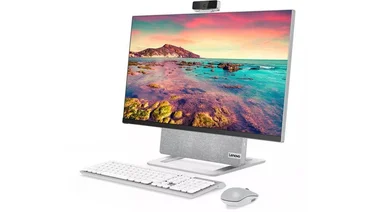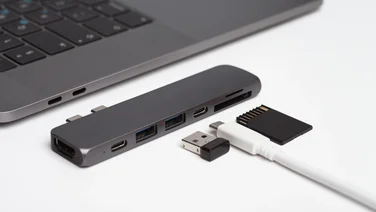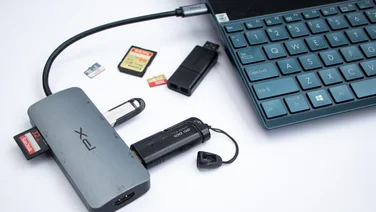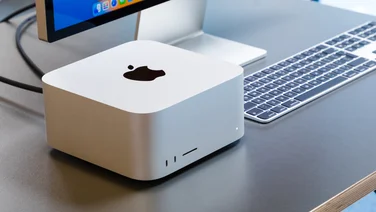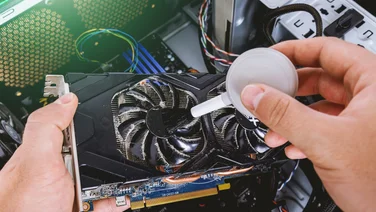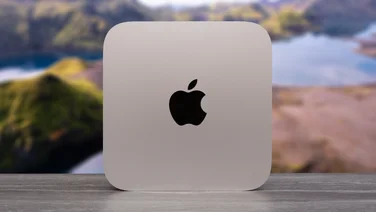To help us provide you with free impartial advice, we may earn a commission if you buy through links on our site. Learn more







- Improved networking performance
- Faster processor for the same price
- Fully compatible with existing accessories and projects
- File copies are slower than you’d expect
Everyone’s favourite pico-computer has just received its latest hardware refresh. It isn’t a drastic overhaul: as the (increasingly unwieldy) name implies, it’s instead an updated version of the Raspberry Pi 3 Model B, originally released in February 2016.
The changes are all for the better, though. The processor is faster than ever before, and the Wi-Fi controller now supports dual-band 802.11ac, which is a big step up from the 2.4GHz-only 802.11n provision of its predecessor. The Ethernet port gets a boost, too, to 300Mbits/sec.
READ NEXT: Best Raspberry Pi projects
Raspberry Pi 3 Model B+ review: Design
To say that the new B+ isn’t much to look at would be an understatement. As usual, it comes as a bare board, and it retains the same basic layout as every Pi since 2014’s original Model B+.
This means the Pi’s trademark 40-pin GPIO connector remains in place, along with a full-sized HDMI connector, four USB 2 ports, a single jack connector for audio and composite video and a micro-USB power socket.







Board-mounted connectors for a camera and LCD display are present and correct too, while storage is handled by a microSD card reader on the underside. So far, so familiar – and that’s no bad thing, as it means the new Model B+ is fully compatible with the whole range of weird and wonderful cases and accessories that are already out there.
Inspect the board closely, however, and you will notice a few novelties. First, next to the GPIO pins there’s now a four-pin connector for the new official PoE hat, allowing the Pi to work more conveniently with remote cameras and the like.
You’ll also see that the quad-core Broadcom BCM2837 processor, which was formerly uncovered, now sits underneath a small metal heatsink. That’s probably because it’s now clocked slightly faster – at 1.4GHz, to be precise, versus the Model B’s 1.2GHz.
Next to that, beneath its RF shield, sits the new network controller. While the Model B’s old 802.11n chipset was fast enough for most people’s needs, the new one should provide a smoother experience if you’re copying or streaming files over a LAN. The Ethernet port has been upgraded as well, to Gigabit Ethernet – although owing to hardware limitations it actually tops out at 300Mbits/sec. Bluetooth 4.2 is supported too, for faster connections and better interoperability with IoT devices.







Raspberry Pi 3 Model B+ review: Performance
The Raspberry Pi was never intended to be a powerhouse but over the generations it’s become quite a capable little thing. The user-friendly Raspbian Linux distribution has come to feel, if not exactly nippy, absolutely usable these days. And the Model B+ gives it an extra kick with a clock speed that’s 17% faster than the old Model B.
The effect of that is quite pleasingly deterministic. Across a wide range of CPU and FPU-bound benchmarks, testing both single-core and multi-core workloads, we saw the Model B+ keep up a very consistent speed boost over the Model B:
Hardinfo |
Model B |
Model B+ |
Improvement |
| Blowfish (Lower is better) | 41.3 | 35.3 | 15% |
| CryptoHash (Higher is better) | 32.8 | 38.1 | 16% |
| Fibonacci (Lower is better) | 12.4 | 10.8 | 13% |
| N-Queens (Lower is better) | 36.1 | 31 | 14% |
| FPU FFT (Lower is better) | 47.2 | 40 | 15% |
| FPU ray trace (Lower is better) | 42 | 35.7 | 15% |
Roy Longbottom |
Model B |
Model B+ |
Improvement |
| Dhrystone MIPS | 2433 | 2839 | 17% |
| Dhrystone MIPS (8 threads) | 5776 | 6684 | 16% |
| Whetstone MWIPS | 911 | 1053 | 16% |
| Whetstone MWIPS (8 threads) | 3973 | 4650 | 17% |
| Linpack MFLOPS | 180 | 206 | 14% |
| Livermore loops average MFLOPS | 211 | 247 | 17% |
To be clear, that isn’t a transformative margin. It doesn’t open up many tasks that you couldn’t do on the Model B. But over successive iterations of the hardware, these modest advances add up. The original Raspberry Pi Model B+ took 99.6 seconds to complete the Blowfish benchmark, so we’re looking at a near tripling of bang-per-buck in just four years. Very few other platforms can make such a claim.
We saw similar results in our browser benchmarks – with one exception:
Browser |
Model B |
Model B+ |
Improvement |
| Peacekeeper | 620 | 685 | 10% |
| Speedometer | 7.16 | 8.12 | 13% |
| JetStream | 14.98 | 17.6 | 17% |
| MotionMark | 5.61 | 5.52 | -2% |
While JavaScript performance was entirely in line with our expectations, the Model B+ merely matched its predecessor in the graphical MotionMark test. There’s a reason for that: the CPU speed may have been nudged up but the integrated VideoCore IV GPU remains at 400MHz, so graphical applications aren’t any faster.
Finally, we also tested the performance of the new networking hardware. Wi-Fi speeds are always highly dependent on environmental factors, but when copying a 2GB file between the Model B and my personal NAS appliance I obtained consistent transfer rates of around 4.5MB/sec in both directions. Surprisingly, the Model B+’s performance was much more asymmetrical: download speeds were only slightly faster, while upstream speeds more than doubled.
The same effect was clearly visible over Ethernet. Again I saw only a small improvement in downstream speed over a wired connection, but upstream transfers were nearly twice as fast:
Networking |
Model B |
Model B+ |
Improvement |
| Copy 2GB file from NAS (Wi-Fi) | 4.4MB/sec | 5.2MB/sec | 18% |
| Copy back to NAS (Wi-Fi) | 4.6MB/sec | 9.6MB/sec | 109% |
| Copy 2GB file from NAS (Ethernet) | 9.1MB/sec | 11MB/sec | 21% |
| Copy back to NAS (Ethernet) | 11.1MB/sec | 20.9MB/sec | 88% |
In truth I found these results rather disappointing. 802.11ac ought to be capable of far higher transfer rates than this, and while the Model B+ doesn’t claim to offer true Gigabit Ethernet speeds, it’s supposed to be three times as fast as the Model B, which it clearly wasn’t.







The explanation may be partly to do with the very compact design of the Raspberry Pi itself: there’s no space for an external antenna (nor anywhere to connect one), which could have greatly improved Wi-Fi performance. I suspect that the limited bandwidth of the microSD card and controller may play a part too. The Pi’s ultra-lightweight storage system wouldn’t be able to keep up with a full-speed Gigabit connection, for example, and nor would an external drive, since the Pi only supports USB 2.
As with the CPU, therefore, it’s best to think of the Pi’s new networking hardware as a user-experience upgrade, rather than anything more significant. It won’t turn your Raspberry Pi into a heavy-duty file server but it will make things feel that bit more snappy.
Raspberry Pi 3 Model B+ review: Verdict
The Raspberry Pi 3 Model B+ isn’t a game-changing step up from its predecessor; if you’ve never seen the appeal of the platform, this incremental iteration isn’t going to change your mind.
In the words of creator Eben Upton, though, the upgraded internals do give it a “substantially better feel” than any previous revision. The Pi is quietly becoming something that you really could use as a lightweight desktop PC while at the same time retaining all the charm and versatility that’s made the platform so beloved of hobbyists and tinkerers.
Perhaps most impressive, it also retains the ultra-low price point. So if you do fancy the idea of buying a computer just to mess around with, the Raspberry Pi is now more tempting than ever.

